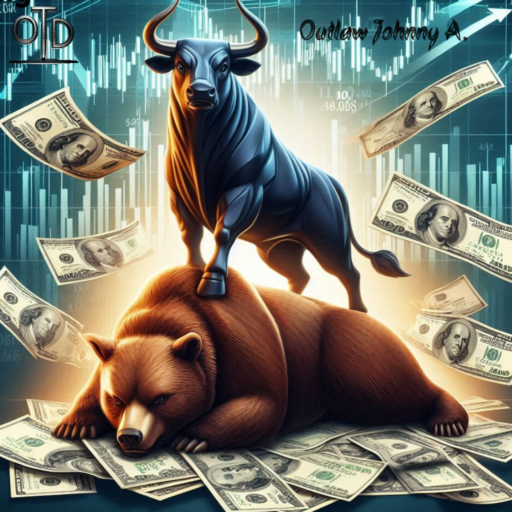Definition: “dead cat bounce” comes from the idea that even a dead cat, if dropped from a great height, will bounce once before finally hitting the ground. In the financial world, it describes a temporary recovery in a stock or market that’s been in a long, steep decline—a brief rebound that doesn’t signal a reversal in the downtrend. Essentially, a short-term price rise after a significant drop is likely to be short-lived and not indicative of a real turnaround.
Trump’s Tariffs: Analysis of a Chain Reaction Impacting Our Economy
When President Trump announced his wave of tariffs on major trading partners, reality finally sunk in those that failed to heed my warning. WAIT UNTIL POLICY IS SET IN WASHINGTON! The chain reaction was finally realized; this will affect corporate spending, consumer prices, the stock market, capital flows, overall economic growth, and even the real estate market.
Corporate Spending and Hiring: The Wait-and-See Response
Tariffs create uncertainty for businesses. When companies face sudden increases in input costs due to tariffs, they become hesitant to invest in new projects or expand their workforce. Executives will delay spending and hiring because they see tariffs as a sign that consumer spending will soon be uncertain. With the cost of goods rising, executives see consumers as likely to pull back on their purchases, and businesses don’t want to commit to long-term investments without a clear forecast of future demand. This wait-and-see approach is a rational response, and it directly stifles growth by reducing immediate capital expenditures and new job creation.
Rising Consumer Prices: Tariffs as a Hidden Tax
Tariffs work like a hidden tax on imported goods, and I’m convinced that they will inevitably lead to higher consumer prices. When companies pay more for imported raw materials or finished products, they pass these higher costs on to us—the consumers. I see it as a direct mechanism: tariffs raise input costs, and those higher costs are reflected in the final retail prices. This isn’t just theory; it’s a predictable outcome that will put pressure on household budgets and, in turn, slow overall consumer spending.
Stock Market Correction Continues: Recalibrating Overpriced Expectations
With corporate earnings expectations being revised downward due to higher costs, policy uncertainty, and slower demand, I believe the market’s optimistic valuations will no longer be sustainable. Given that many stocks have been priced on overly high expectations, I expect the correction to continue, although we will get the occasional dead cat bounce along the way.
Trump’s tariff policies are far more than just a tool for trade negotiations—they’re sparking a chain reaction that will dampen corporate spending and hiring, raise consumer prices, and thus continue the current stock market correction. Capital will continue to flow out of the U.S. market, and overall economic growth will likely slow in early 2025. However, as Treasury Secretary Bessent emphasizes, reduced government spending and lower inflation expectations will drive down long-term bond yields, creating an opportunity for the real estate market to rebound by late 2025 into 2026 and should make risky assets (stocks) attractive again.
Additionally, the fact that 70–75% of S&P 500 companies that have reported Q1 earnings are lowering their 2025 estimates—and that roughly 30% are withholding guidance—only confirms my view that corporate America is bracing for a challenging year ahead. This environment of uncertainty makes it essential for investors to monitor policy developments and reassess exposure to volatile equities.
In short, there is going to be short-term pain before the gain. Cash is king because there will be a great buying opportunity down the road.
Capital Outflows: Seeking Opportunity Abroad
Tariffs and rising inflation hurt U.S. earnings; capital will begin to flow out of our markets and into international markets—like Europe and China. I interpret this as a flight to undervalued or less exposed to policy-induced volatility where government spending is increasing. This capital outflow further depresses domestic asset prices and adds an extra layer of difficulty in the short term.
Economic Slowdown: The Aggregate Drag
The combined effect of delayed corporate spending, reduced hiring, and falling consumer confidence sets the stage for an economic slowdown currently. I firmly believe that when both businesses and consumers become cautious, aggregate demand declines. This drop in demand leads directly to slower GDP growth. Even if some sectors might show resilience, the overall economy will feel the drag. This slowdown could become more evident in the months ahead. As the negative impacts of tariffs ripple across various sectors, further reinforced by capital outflows and reduced investment.
Lower Long-Term Bond Yields: A Flight to Safety and Fiscal Discipline
When I consider the dynamics of long-term bond yields, one crucial factor is the government’s fiscal behavior. Treasury Secretary Bessent has emphasized that reducing government spending is a powerful tool for lowering long-term bond yields. Here’s why:
- Reduced Fiscal Deficit: By cutting spending, the government can narrow its fiscal deficit. This, in my opinion, means there is less need for the government to borrow money. With reduced borrowing demand, there’s less upward pressure on bond yields.
- Lower Inflation Expectations: Less government spending also tends to ease inflationary pressures, as there’s less excess demand in the economy. Lower inflation expectations make long-term bonds more attractive because investors require a smaller yield premium to compensate for inflation risks.
- Overall Fiscal Sustainability: In my view, a leaner government spending approach creates a more sustainable fiscal path. With fewer deficits and lower inflation risks, long-term yields naturally drop. This dynamic is exactly what Bessent is banking on—and I believe it’s a crucial element that will help drive down borrowing costs across the economy.
The Silver Lining—Real Estate
Later on this year, the possible silver lining will be the real estate market. I look for the 10-year note to continue to drop. Lower long-term bond yields mean cheaper financing for homebuyers and developers. Historically, when borrowing costs decline, real estate tends to rebound as buyers and developers take advantage of lower rates. (Remember I said this!)
Conclusion
Analysis: Trump’s tariff policies are far more than a trade negotiation tactic—they are a chain reaction of economic impacts. I see them causing hesitancy in corporate spending and hiring, directly raising consumer prices, triggering a stock market correction, and prompting capital to flow overseas where government stimulus is being injected. These factors, in my opinion, will contribute to an economic slowdown in early 2025. However, I also believe that the resulting (of these policies) lower long-term bond yields—driven by reduced fiscal deficits and lower inflation expectations—will create a unique opportunity for the real estate market, potentially spurring growth in that sector (as well as the overall economy), which will benefit investors and consumers by the end of the year and into 2026.
Final Take (so where is the market heading?)
Oh, of course—if you’d been listening since January 2025, you’d know exactly where this was headed. I always say, think like an institutional money manager. Institutions despise uncertainty, and right now, uncertainty is practically running the show. The smart money hit the exit when I suggested you follow them: “They see stocks as overvalued” (why would they buy now with so much uncertainty?) Uncertainty has pushed momentum firmly into the red zone.
Inflation readings have kept the Federal Reserve comfortably on the sidelines, which only adds fuel to the fire.
Meanwhile, “smart money is collecting 4–6% in bonds—watching their principal increase as rates fall. Their thought process is why take on the risk of overhyped equities when you can sit in bonds until the smoke finally clears or valuations drop to an irresistible 4800 to 5100 on the S&P 500? I expect the economic slowdown to persist, with less than a 30% chance of a full-blown recession. There is no clear sign of that yet. For now, consumer incomes, employment and savings look good. The big picture tells me the path of least resistance for the stock market is lower in the short.
And let’s not forget those inevitable dead cat bounces—luring many retail investors to jump back in. But if you’re smart, like I am, you’ll steer clear and wait for the dust to settle. The return of the smart money will come when either the market corrects adequately or the Fed finally sends a clear message that rates are about to drop. I’ve been saying for over a month it was time to take money off the table. What did you do?
It has been a weird year thus far for the stock market, and it could become even more unusual if we see a late summer rally. Things are shaping up that way. It depends upon how deep the market corrects or when the Federal Reserve re-enters the picture. The perfect setting for another…
I told you so.

